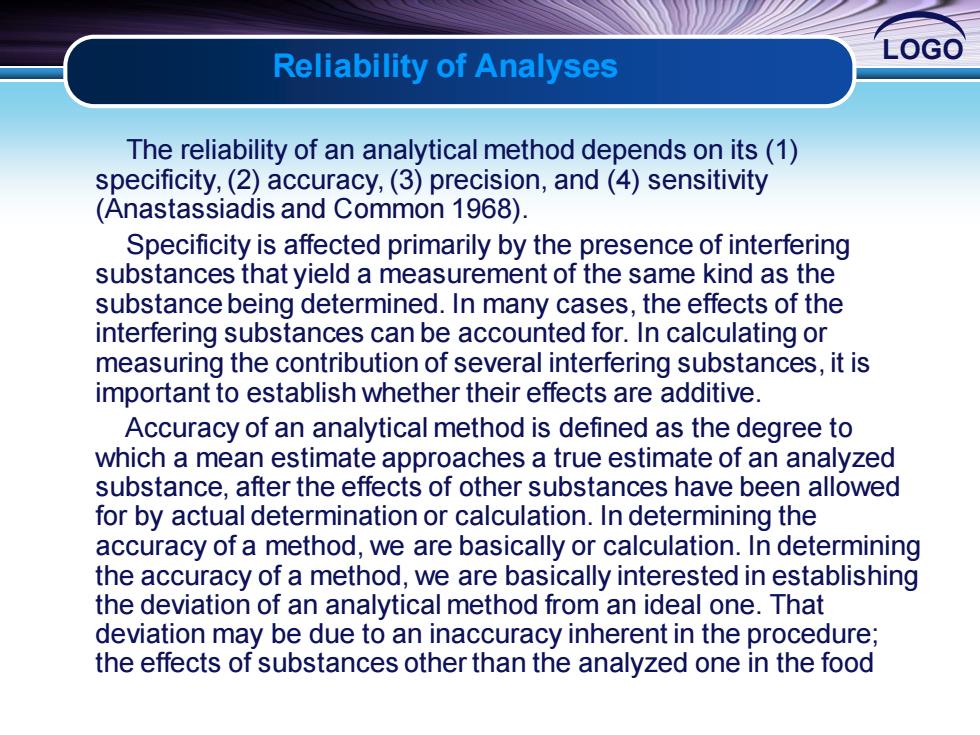
LOGO acid are computed. In trade and industry,empirical tests are often used.For example, fat acidity of cereal grains is often expressed as mg KOH required to neutralize the fatty acids in 100 g of food.Acidity is often expressed for simplicity in milliliters of N/10 or N NaOH.The acidity of acid phosphates in baking powders is reported in industry as the number of parts of sodium bicarbonate that are required to neutralize 100 parts of the sample
LOGO acid are computed. In trade and industry, empirical tests are often used. For example, fat acidity of cereal grains is often expressed as mg KOH required to neutralize the fatty acids in 100 g of food. Acidity is often expressed for simplicity in milliliters of N/10 or N NaOH. The acidity of acid phosphates in baking powders is reported in industry as the number of parts of sodium bicarbonate that are required to neutralize 100 parts of the sample

Reliability of Analyses LOGO The reliability of an analytical method depends on its(1) specificity,(2)accuracy,(3)precision,and(4)sensitivity (Anastassiadis and Common 1968). Specificity is affected primarily by the presence of interfering substances that yield a measurement of the same kind as the substance being determined.In many cases,the effects of the interfering substances can be accounted for.In calculating or measuring the contribution of several interfering substances,it is important to establish whether their effects are additive. Accuracy of an analytical method is defined as the degree to which a mean estimate approaches a true estimate of an analyzed substance,after the effects of other substances have been allowed for by actual determination or calculation.In determining the accuracy of a method,we are basically or calculation.In determining the accuracy of a method,we are basically interested in establishing the deviation of an analytical method from an ideal one.That deviation may be due to an inaccuracy inherent in the procedure; the effects of substances other than the analyzed one in the food
LOGO The reliability of an analytical method depends on its (1) specificity, (2) accuracy, (3) precision, and (4) sensitivity (Anastassiadis and Common 1968). Specificity is affected primarily by the presence of interfering substances that yield a measurement of the same kind as the substance being determined. In many cases, the effects of the interfering substances can be accounted for. In calculating or measuring the contribution of several interfering substances, it is important to establish whether their effects are additive. Accuracy of an analytical method is defined as the degree to which a mean estimate approaches a true estimate of an analyzed substance, after the effects of other substances have been allowed for by actual determination or calculation. In determining the accuracy of a method, we are basically or calculation. In determining the accuracy of a method, we are basically interested in establishing the deviation of an analytical method from an ideal one. That deviation may be due to an inaccuracy inherent in the procedure; the effects of substances other than the analyzed one in the food Reliability of Analyses